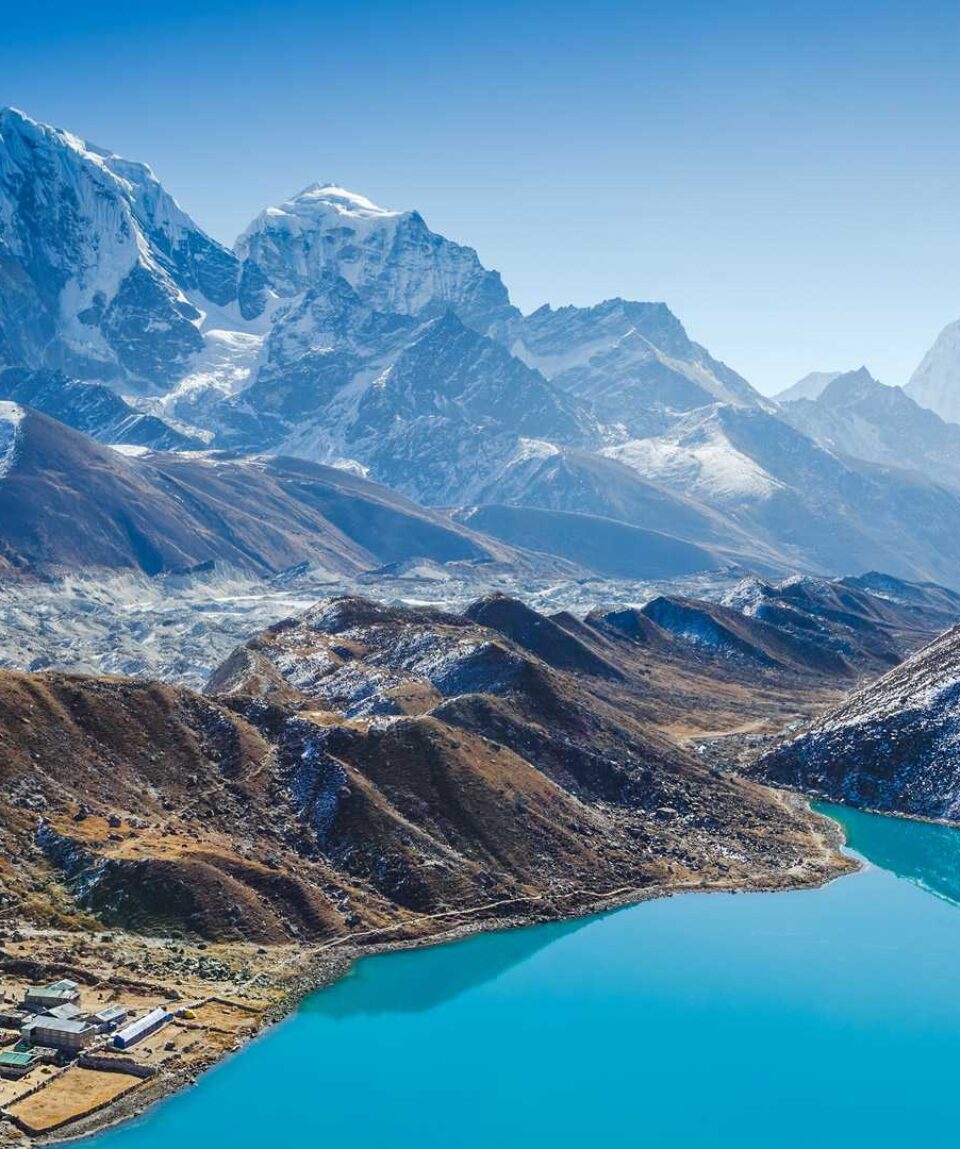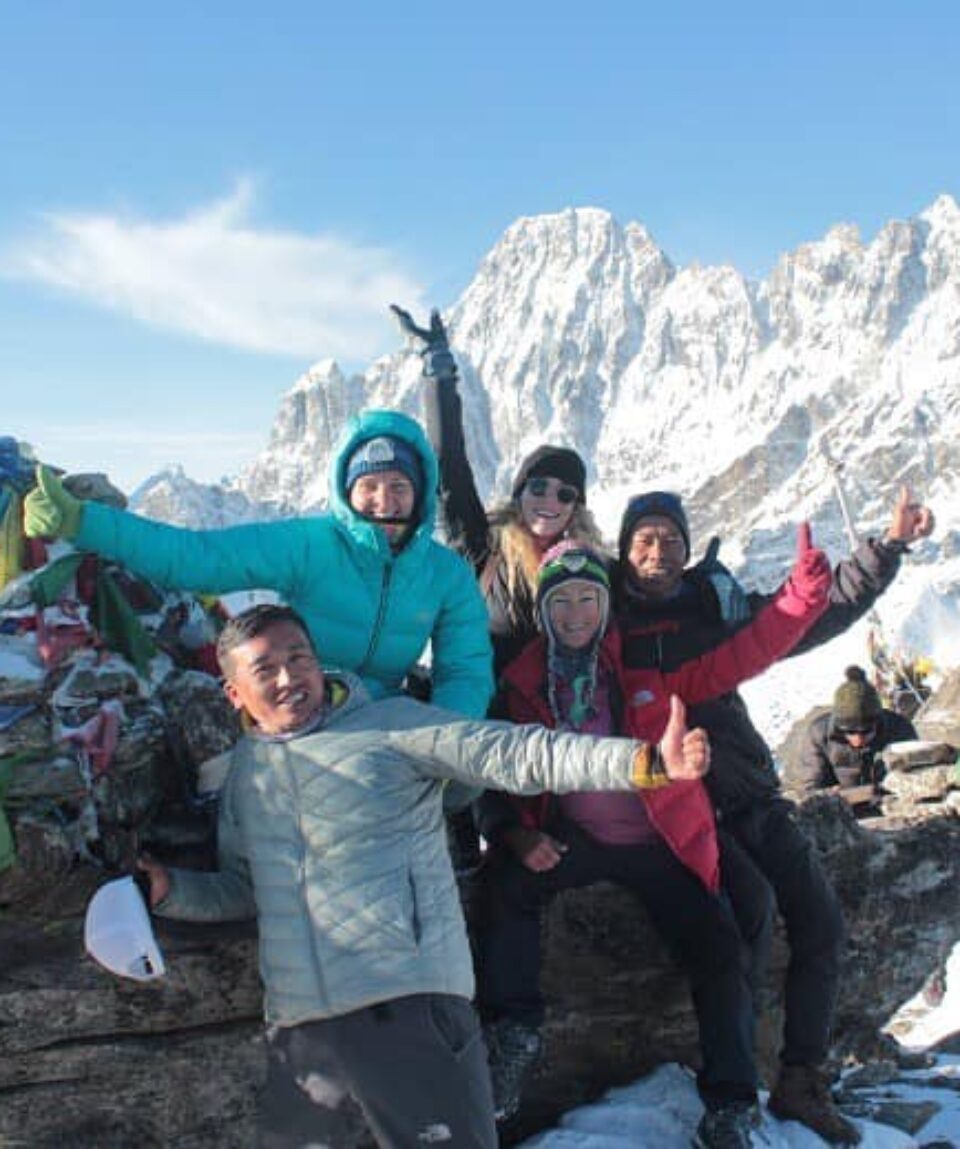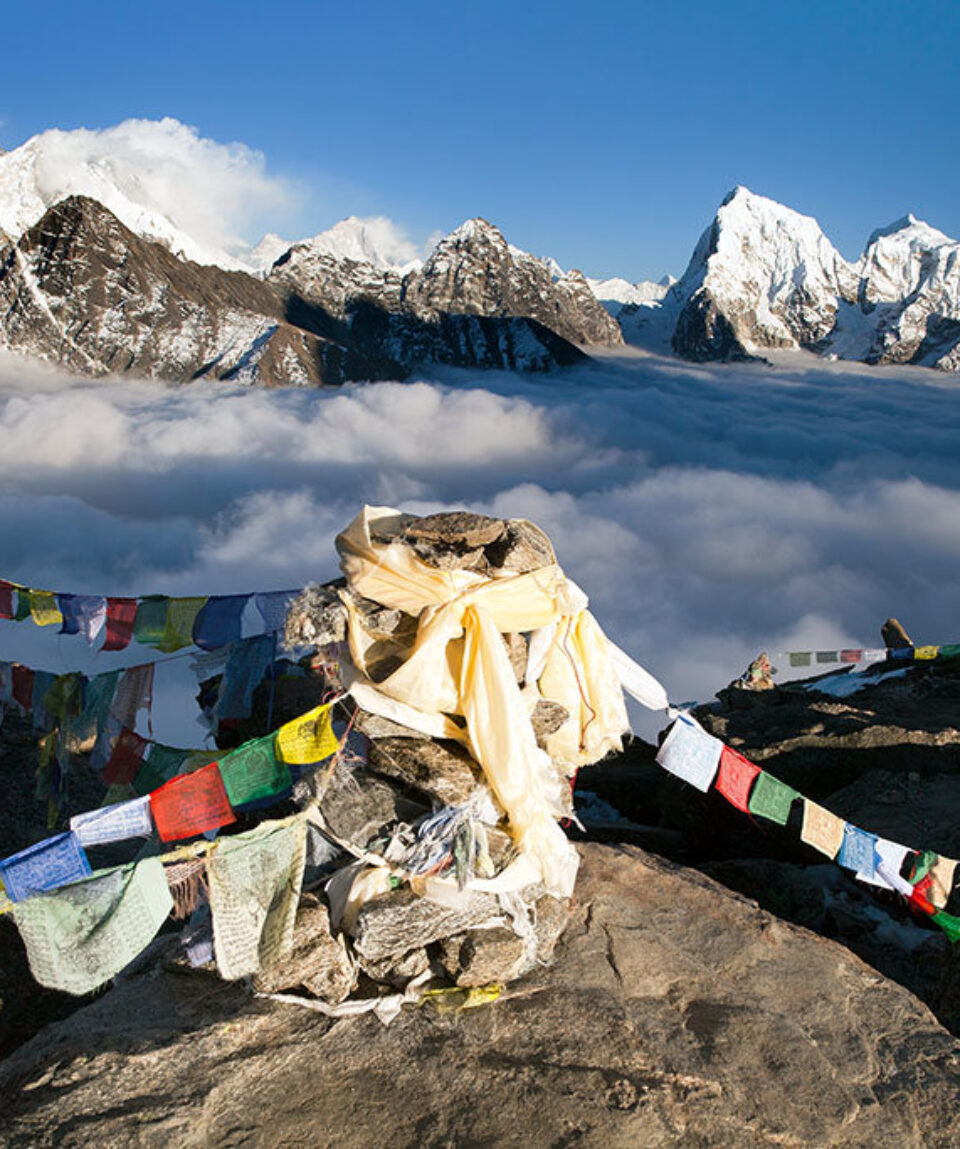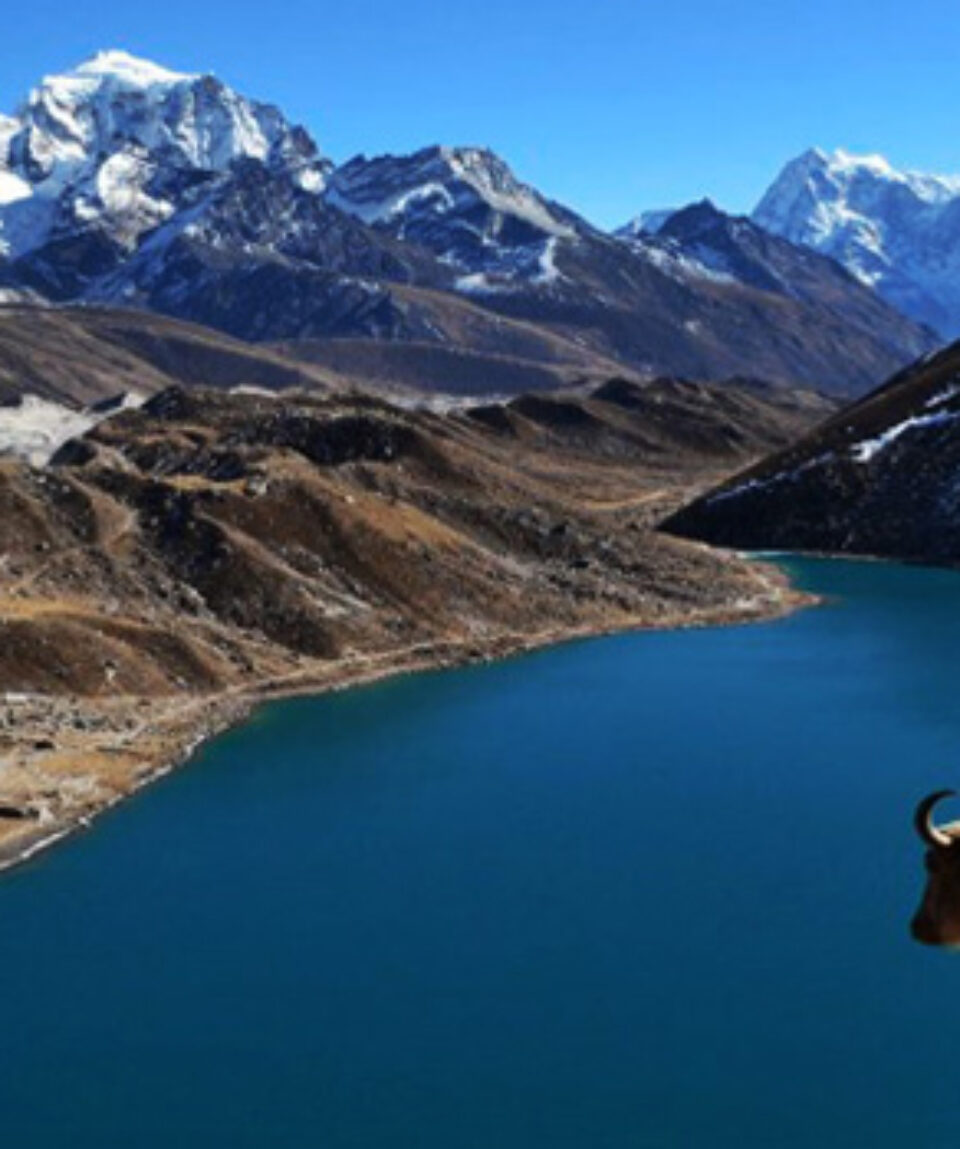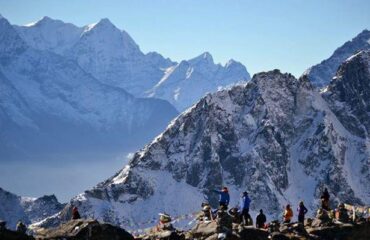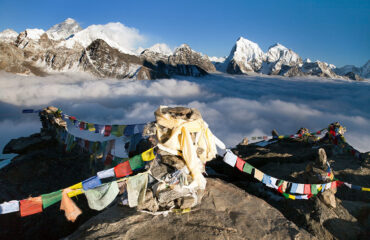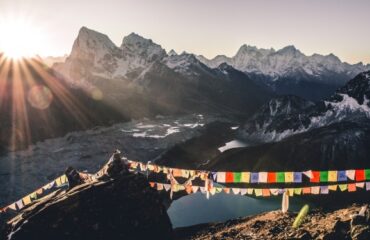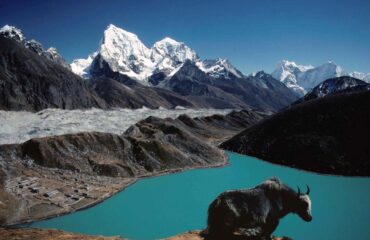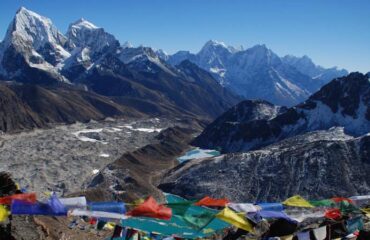Gokyo Valley Trek
fromAn exploration of the high alpine yak pasture, Sherpa culture and sparkling glacial lakes next to the Everest and the Himalayan vista from Gokyo Ri on an amazing trek in the Everest region.
-
Reviews 0 Reviews0/5
-
Vacation Style Holiday Type
-
Hiking
-
-
Activity Level Strenuous
-
Group Size Medium Group
The Gokyo Valley Trek is an alternative to the traditional Everest Base Camp trek while still providing the trekker with plenty of stunning views of Mount Everest. Gokyo Valley Trekking is an exciting adventure at the Everest region with an opportunity to view never seen before dramatic scenes of the world’s highest Himalayas above 8000 meters including Mt. Everest from the summit of Gokyo Ri at 5335 m. Also enjoy trekking through insightful Sherpa Villages, alpine surroundings passing all the way across the biggest Ngozumpa glacier which are the major highlights of this trip. This trek will provide you complete pleasure as you’ll get a chance to enjoy the actual journey.
The sparkling, pristine blue and green waters of the Gokyo Lakes are one of Nepal’s most memorable sights. The Gokyo Lakes trek is ideal for people who want to trek in the Everest region, but who want more variety of views and fewer nights spent at very high altitudes and avoid the Everest crowd.
- Airport transfers and escort.
- All meals during trek. (breakfast, lunch, dinner, tea, and coffee)
- Accommodation during the trek at the local lodges.
- Domestic airfares and transportation from Kathmandu to the trek starting point.
- English speaking government-licensed Sherpa trekking guide & assistant guide (4 trekkers=1 assistant guide)
- Porter Service (2 Trekker =1 porter)
- Staff cost including their (wages, insurance, food, and accommodation)
- All national park fees
- Local municipality entry fees.
- 3 nights accommodation at 3 star category hotel in Kathmandu on twin sharing with breakfast.
- All guided sightseeing tours in Kathmandu and entry fees.
- All ground transportation on comfortable private vehicle
- All government and local taxes
- International airfares
- International Airport Departure Tax and visa entry fees
- Trekking Equipment
- Major meals, Lunch, and dinner during your stay in Kathmandu
- Any type of personal expenses, such as alcoholic beverages and drinks, phone, and laundry.
- Rescue & travel insurance, trip cancellation costs, accident or health emergency, evacuation, loss, theft or damage to baggage, and personal effects.
- Tips & Gratuities to porters and guides
- We strongly advise you to take out personal travel insurance.
- Day 1 Depart Home Country
- Day 2 En Route (Transit)
- Day 3 Arrive in Kathmandu (1,350m/4,429ft)
- Day 4 Kathmandu: Sightseeing and trek preparation (1,350m/4,429ft)
- Day 5 Fly to Lukla trek to Phakding (2,800m/9,187ft) 3-4 hrs
- Day 6 Phakding to Namche Bazaar (3,438m/11,280ft) 5-6 hrs
- Day 7 Namche Bazaar: acclimatization (3,438m/11,280ft)
- Day 8 Namche Bazaar to Phorse (3,810m/12,501ft) 5-6 hrs
- Day 9 Phorse Village to Machhermo (4,470m/14,666ft) 5-6 hrs
- Day 10 Machharmo to Gokyo (4,800m/15,749ft) 5-6 hrs
- Day 11 Gokyo Valley: Climb Gokyo Ri and hike to fifth lakes (5,357m/17,576ft) 5-6 hrs
- Day 12 Gokyo to Dole (4,038m/13,249ft) 3-4 hrs
- Day 13 Dole to Namche Bazaar (3,438m/11,280ft) 4-5 hrs
- Day 14 Namche Bazaar to Lukla (2,800m/9,187ft )6-8 hrs
- Day 15 Fly to Kathmandu (1,350m/4,429ft)
- Day 16 Reserved day in Kathmandu
- Day 17 Transfer to airport for international departure
- Day 18 En route to Home country
- Day 19 Arrive Home Country
The main emphasis while trekking is on keeping warm and dry while still being lightweight. You should bring a rucksack or backpack for the gear required during the day. Your pack should contain items such as warm clothes, a jacket, a camera, water bottles, a personal first aid kit, and snacks. The weight limit is 5kg. A porter will carry the rest of your personal equipment packed in a duffel or kit bag. The weight limit for your duffel bag is 15 kg however it is different in the case of peak climbing and expedition.
A Note on Packing
For your international flights, we recommend that you pack all your equipment in your two duffle bags or suitcase. Do not simply pack your backpack (since the straps can be damaged by the baggage handling machines). It is important to lock these bags for their trip. Depending on the airport, you may be able to put your travel locks on after TSA has searched the bags. If not, Lock the bags with Zip Ties. If the TSA cuts off the zip-tie to search your bag, they will replace it. You will still need the travel locks to lock your bags in the hotel and during the trek. Generally, you will take one duffel on the trek , and leave one in the hotel in Kathmandu with your belongings for your time in the city. Your trek in duffel will only be accessible in the evenings (with items such as changes of clothing, sleeping bag), and your day pack will hold vitals such as water, layering, blister kit, and camera.
FOOTWEAR
- Hiking Boots with ankle support. Make sure they are comfortable and you have worn them in before arriving in Nepal.
- Camp Shoes or Tennis Shoes
- Thick, warm wool and day hiking socks
- Camp Sandle
- Gaiters (Optional )
- Plastic bag to carry spare shoe
CLOTHING
- Lightweight Trekking pants
- Synthetic T-shirts, long-sleeve shirts
- Synthetic hiking pants, Zip-off pants
- Trekking trousers
- T-shirts – Lightweight, quick-drying
- Long-sleeved shirt
- Fleece jacket with wind-Stopper (With wood)
- Down vest and/or jacket
- Rain jacket or poncho (Gore-tex or equivalent)
- Rain pants (Gore-tex or equivalent)
- Down jacket medium weight
- Fleece or wool pants
- Synthetic Underwear
- Women sports bras, synthetic(for women)
- Waterproof (preferably breathable fabric) shell pants
- Long sleeve tops or shirts (not cotton).
- Microfleece.
- Mid to heavyweight fleece or synthetic/ Primaloft
HEAD & GLOVES
- Fleece gloves.
- Warms mittens and/or gloves.
- Wool or fleece hat.
- Sun hat
- Warm hat wool or synthetic that covers your ears
- Bandana or scarf (eg. Buff Headwear).
- Head torch. Bring extra batteries.
- Sunglasses with UV Protection
ACCESSORIES
- Lightweight Sleeping bag
- Trekking poles
- Basic First Aid Kit
- Daypack (Ruck Sack): Recommended size is around 30 litres. You need to have enough space to carry water
bottles, a camera, snacks, and extra clothing. The pack should have a good waist belt. It is also a good
idea to bring a rain cover to keep the contents dry - Fleece or silk liner for your sleeping bag
- Stuff sacks for keeping your gear dry and organized (Optional )
- Thermo-rest sleeping (optional)
- Water bottles
- Small wash towel
- Sunscreen and lip salve
- Water purification tablets (Pristine, Biox Aqua or Aqua Mira).
- Favorite snack food.(Optional)
- Books and cards etc.(Optional)
- Camera with spare batteries and memory cards.(Optional)
- Insurance certificate.
- Earplugs (optional).
- Hand sanitizer
- Any personal medications
TOILETERS
- Quick-drying towel (medium-sized)
- Soap (preferably biodegradable)
- Tooth brush/paste (preferably biodegradable)
- Deodorants
- Face and body moisturizer
- Nail clippers
- A small mirror (optional)
- Tissue paper/ toilet roll
- Anti-bacterial Hand wash etc ….
The Gokyo lake trek is moderately difficult. You need to be in good shape and stamina for this trek as it requires walking about 5 to 6 hours, excluding the acclimation days. The rugged trails, steep terrains, and high passes prove to be more burdensome.
October and November or April and May are widely considered to be the best times for this trekking. The weather during these two seasons is generally clear and dry, and so it’s not too cold when heading into high altitudes.

